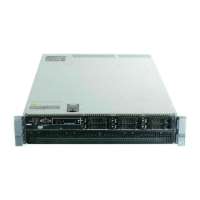Memory Settings
You can use the Memory Settings screen to view all the memory settings and enable or disable specic memory functions, such as
system memory testing and node interleaving.
Related links
Memory Settings details
System BIOS
Viewing Memory Settings
Viewing Memory Settings
To view the Memory Settings screen, perform the following steps:
1. Turn on, or restart your system.
2. Press F2 immediately after you see the following message:
F2 = System Setup
NOTE: If your operating system begins to load before you press F2, wait for the system to nish booting, and then
restart your system and try again.
3. On the System Setup Main Menu screen, click System BIOS.
4. On the System BIOS screen, click Memory Settings.
Related links
Memory Settings
Memory Settings details
Memory Settings details
The Memory Settings screen details are explained as follows:
Option
Description
System Memory
Size
Species the memory size in the system.
System Memory
Type
Species the type of memory installed in the system.
System Memory
Speed
Species the system memory speed.
System Memory
Voltage
Species the system memory voltage.
Video Memory Species the amount of video memory.
System Memory
Testing
Species whether the system memory tests are run during system boot. Options are Enabled and Disabled.
This option is set to Disabled by default.
Memory Operating
Mode
Species the memory operating mode. The options available are Optimizer Mode, Advanced ECC Mode,
Mirror Mode, Spare Mode, Spare with Advanced ECC Mode, Dell Fault Resilient Mode and Dell NUMA
Fault Resilient Mode. This option is set to Optimizer Mode by default.
NOTE: The Memory Operating Mode option can have dierent default and available options based
on the memory conguration of your system.
NOTE: The Dell Fault Resilient Mode option establishes an area of memory that is fault resilient.
This mode can be used by an operating system that supports the feature to load critical
applications or enables the operating system kernel to maximize system availability.
Node Interleaving Species if Non-Uniform Memory architecture (NUMA) is supported. If this eld is set to Enabled, memory
interleaving is supported if a symmetric memory conguration is installed. If the eld is set to Disabled, the
system supports NUMA (asymmetric) memory congurations. This option is set to Disabled by default.
41

